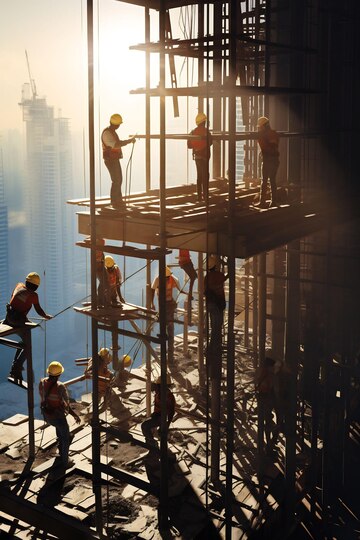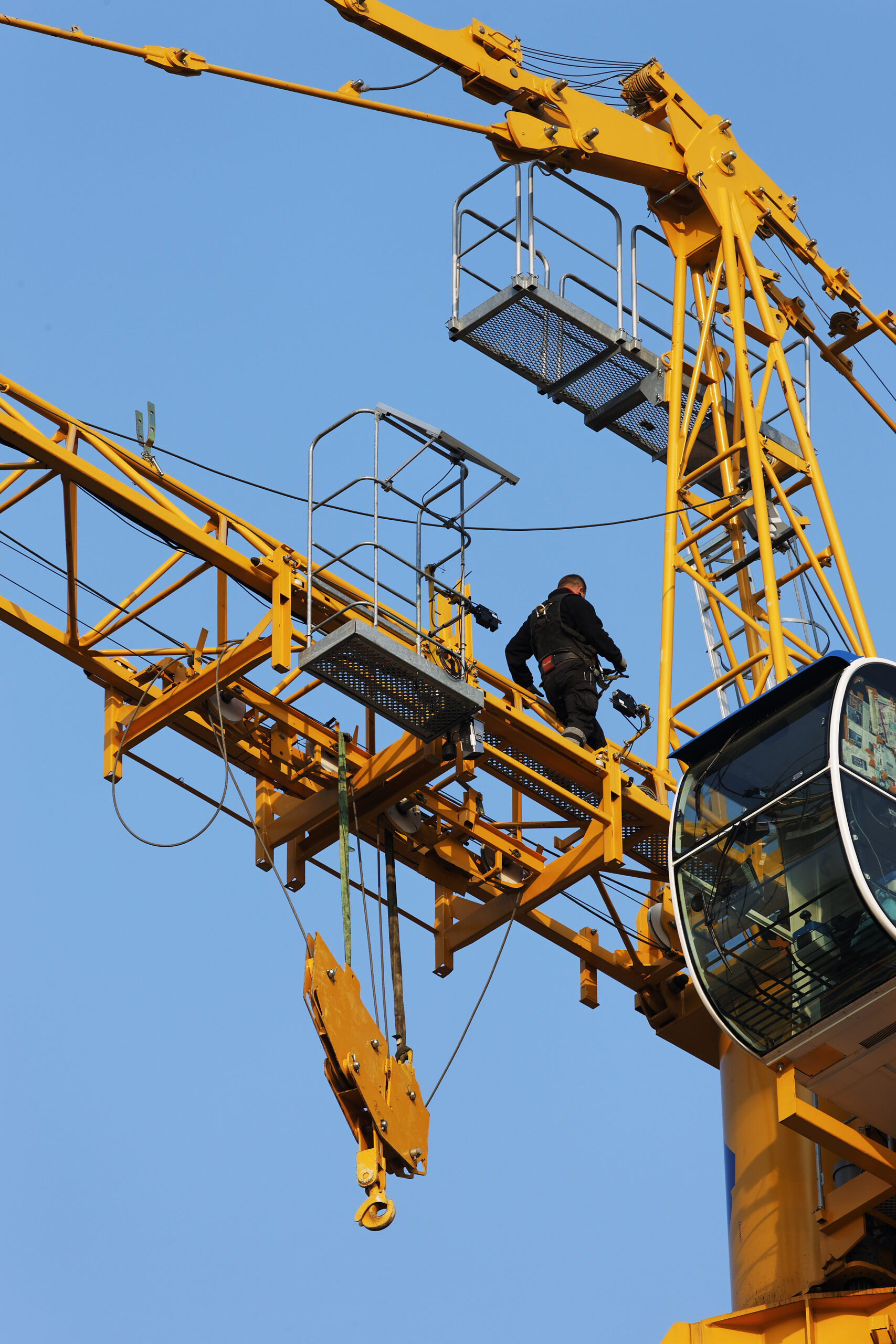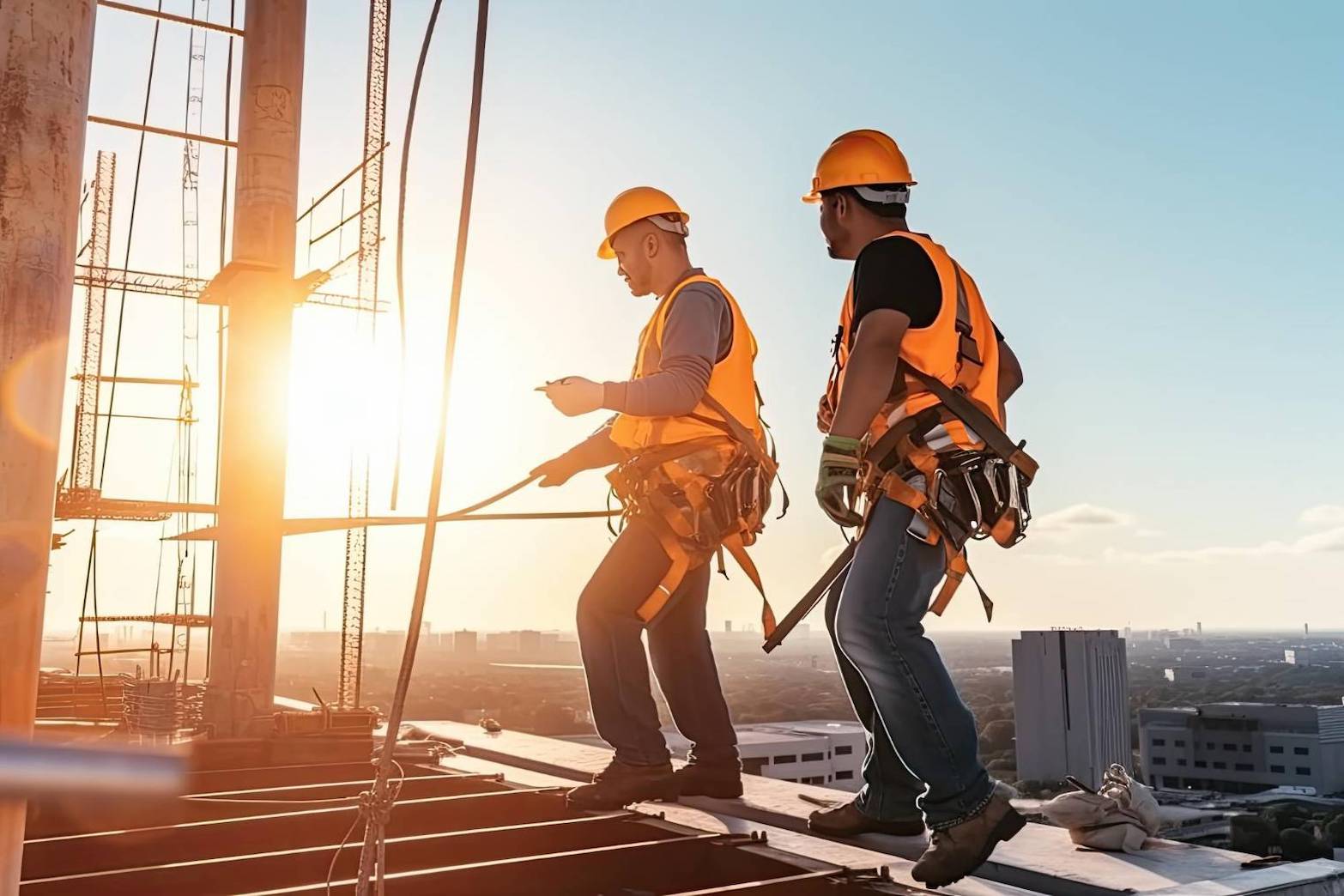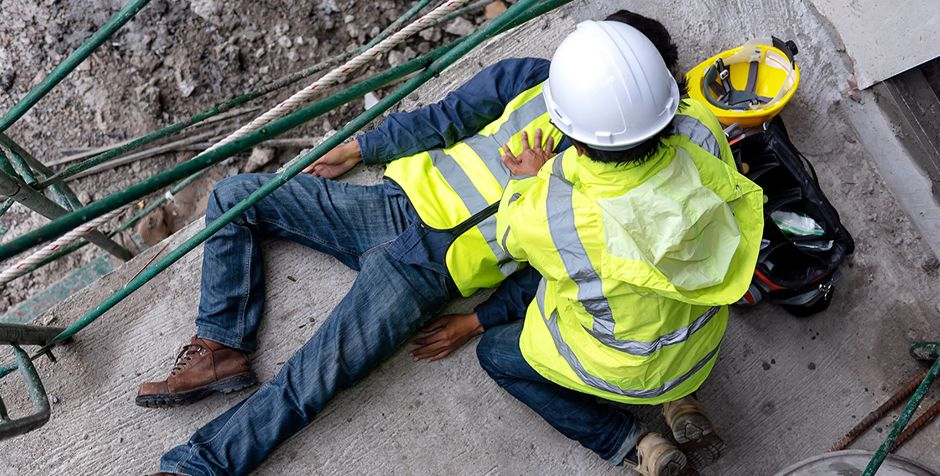Falls from Height A Major Cause of Workplace Fatalities and Serious Injuries | GLOVETEX.COM

7 Essential Safety Techniques for Working at Height and on Scaffolding
- Protective Equipment: Wear safety harnesses, safety lines, helmets, slip-resistant shoes, etc.
- Check Seating Area: Inspect seating areas to ensure stability and support.
- Hazard Alerting: Install warning signs, barriers, safety nets, and arrange work areas to be safe.
- Training: Attend training on working at heights and using equipment correctly.
- Health Check: Take sufficient breaks, maintain good health, and have no chronic illnesses.
- Work Mindfully: Focus on tasks, be aware of surroundings, and avoid distractions.
- Report Risks: Inform supervisors or responsible persons when identifying risks or hazards.
Working at heights or in areas with varying levels, as well as working on elevated platforms where there is a risk of falling, such as construction work, maintenance, electrical transmission work, cleaning tasks, rescue operations, or even working in excavations, pits, etc., requires workers to receive proper training, knowledge, understanding, and practice to ensure safety while working at heights and compliance with standards.

Pre-Work Checklist
- Must have knowledge of the causes and prevention of accidents at heights.
- Understand the roles and responsibilities of workers at heights and on elevated platforms.
- Understand the procedures and methods for compliance with legal requirements.
- Know how to use fall protection systems and working at height equipment.
- Understand the requirements for working, including permits for working at heights and sitting on elevated platforms.
- Have knowledge and understanding to assess and analyze risks using JSA.
- Be able to inspect tools and various equipment accurately.
- In case of accidents while working, should know basic first aid procedures for initial assistance.

1. Underlying Causes of Accidents
1.1 Management Mishaps
- No training or instruction on working at heights or sitting on elevated platforms.
- No enforcement of safety laws and regulations in the workplace.
- Lack of planning and assessment of safety aspects of work.
- No measures to address various hazards.
- Absence of provision of personal protective equipment.
1.2 The worker is not in a fit physical and mental state to work
- Lack of caution, incorrect attitude, lack of determination, easily emotional, and pessimistic. Feelings of fear, easily startled, weak, hearing impaired, poor eyesight, physically unfit for high-altitude and seated work. Suffering from hypertension, diabetes, heart disease, and physical disabilities.


2. Direct Causes of Accidents
2.1 The work area or seating is not sufficiently sturdy for working at heights.
2.2 The area is not stable enough and lacks proper adherence.
2.3 The weather conditions are not conducive for working at heights or seated work.
2.4 Not wearing fall protection equipment or not properly tethered.
2.5 Anchorage points are not sufficiently strong (should comply with OSHA standards 1926, 5000lbs).
1. Fall Restraint (Confined to Work Area
It refers to restricting the position of workers at heights or limiting movement to prevent them from entering or standing in areas where there is a risk of falling, such as edges of roofs, eaves, poles, ladders, or seated work areas. Another form of this is erecting barriers, such as fall protection rails, to prevent workers from entering areas where falls may occur.
2. Fall Protection (Prevention of Falls to the Ground or Structures)
It means to secure or hold the worker's body to prevent them from hitting the ground below when they enter a potentially hazardous area, such as roof edges, eaves, ladders, seated work areas, structures, signal poles, etc., and then slip or fall. The fall protection equipment worn by the worker, such as full-body harnesses and twin-legged lanyards or Rocker Lanyards, helps to secure them before impact with the ground or structure. The worker is suspended safely in mid-air until further assistance is provided, or safety nets are installed to prevent them from falling to the ground below.
Be Aware of the 5 Hazards in Working at Heights
- Hazard 1: Falling from heights
- Hazard 2: Falling from ladders
- Hazard 3: Tripping/slipping
- Hazard 4: Falling objects
- Hazard 5: Other hazards such as lack of knowledge/worker's health issues/not wearing personal protective equipment/electrocution
All hazards can result in fatalities.

Assistance in the event of accidents involving falls from heights, or when suspended at height while working on a raised structure
- Stay alert...!!!!!
- Do not remove the equipment attached to your body.
- Shout for help.
- Move your legs (pedal a bicycle).
- Find a nearby structure to pull yourself towards.
- The helper must know lifting and moving techniques.
Rescuers must have the knowledge and appropriate equipment for the task. If possible, assistance should be provided from a distance. Rescue operations are integral to high-altitude work plans and require trained personnel and rescue equipment. Access and movement of injured persons depend on different factors, including the area and circumstances. If the victim can still assist themselves, the rescue team may lower a rescue harness for them to secure themselves before providing assistance. Then, they can lower the victim and proceed with further actions.
information. or request a quotation
Call Center: 034-878762 ext. 3
Or you can follow us at : Click here
Hotline 083 989 7512 (telephone sales department)
เอกสารอ้างอิง
• BS 8454 Code of practice for the delivery of training and education for work at height and rescue
• ASTM INTERNATIONAL: F2752, F2954, F2955 – Standard Guide for Training for Level I Rope Rescue (RI) /Level II Rope Rescue (RII) / Level III Rope Rescue (RIII) Rescuer Endorsement
• ISO/IEC 17024 Conformity assessment – General requirements for bodies operating certification of persons
• ISO/IEC 17020 Conformity assessment – Requirements for the operation of various types of bodies performing inspection
• *NFPA 1670 Standard on Operations and Training for Technical Search and Rescue Incidents – addresses the team requirements / organization technical rescue standard -- Team rescue capabilities.
• *NFPA 1006 Standard for Technical Rescue Personnel Professional Qualifications -- specifies the minimum job/work performance requirements for a rescue technician – Individual standard.

